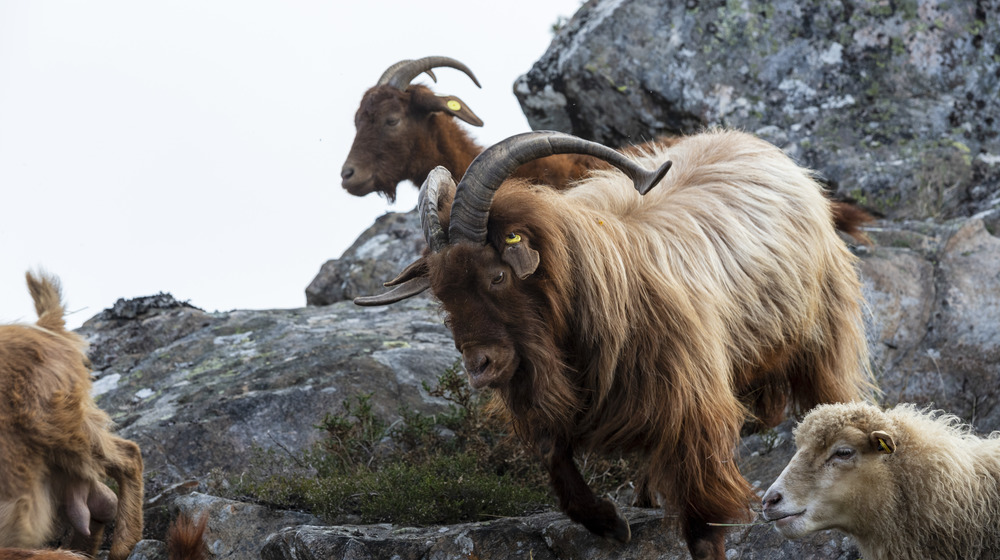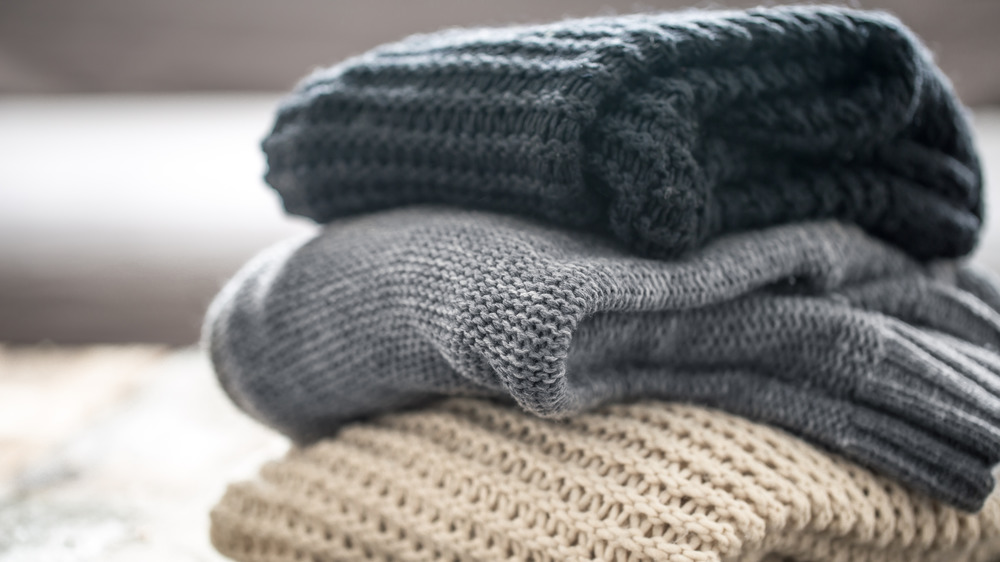Here's The Real Difference Between Cashmere And Wool
There's nothing better than snuggling into a crazy warm sweater when it's chilly and bleak outside. Add some hot cocoa and a good book and we'll stay there all winter. Choosing a natural fiber like wool or cashmere for your next all-season-long fashion staple is not only a great choice for the environment (both are biodegradable) but it's a great investment in your wardrobe. Here's what you need to know about these natural fibers so you can choose the right one.
When a natural fiber is labeled as wool, that means that it must be made exclusively from the wool that grows on sheep: their natural fluffy coats that are grown year round and sheared seasonally. Once shorn, the wool is cleaned, carded, spun, and then knit or woven into cloth and garments, sometimes in large industrial processes, and sometimes still entirely by hand by artisans and crafters (via Sewport).
While wool refers to the fluffy stuff on sheep, many goats, alpacas, and even some rabbits can be the source of natural fibers that make beautiful clothing and are very warm. While generic wool can come from any kind of sheep, cashmere comes from goats — specifically cashmere goats — who are bred for their soft, downy undercoats that are used for fiber (via Cashmere Goat Association).
Choosing between wool and cashmere
As noted by PureWow, both fibers make for warm and beautiful garments, with each having their own slight advantage. Since cashmere fibers are finer than most wool, they're better at keeping body heat, so you get more warmth with less bulk out of a cashmere sweater than a wool one. But since cashmere can also be more delicate than wool, it can require a bit more care to stay looking great. Cashmere keeps its shape better than wool, but finer, softer fabrics tend to be more prone to pilling.
The good news is that neither fabric is likely to run up much of a dry cleaning bill as the majority of care can be done at home. Wool and cashmere are both naturally antimicrobial so they're not likely to get as stinky as your favorite T-shirts, even if you sweat in them.
Martha Stewart advises that hand-washing is best for wool and cashmere garments. Fill a basin or large bowl with tepid (not hot) water and add a bit of wool cleanser or shampoo. Gently submerge the sweater, and swirl it around for a minute or two, then soak for up to 30 minutes. When removing it from the water do not wring it out or you will destroy the shape. Instead, gently crumple the sweater to get out some of the excess water before allowing the sweater to dry flat on a towel or drying rack. You should only need to do this one or twice a season.

